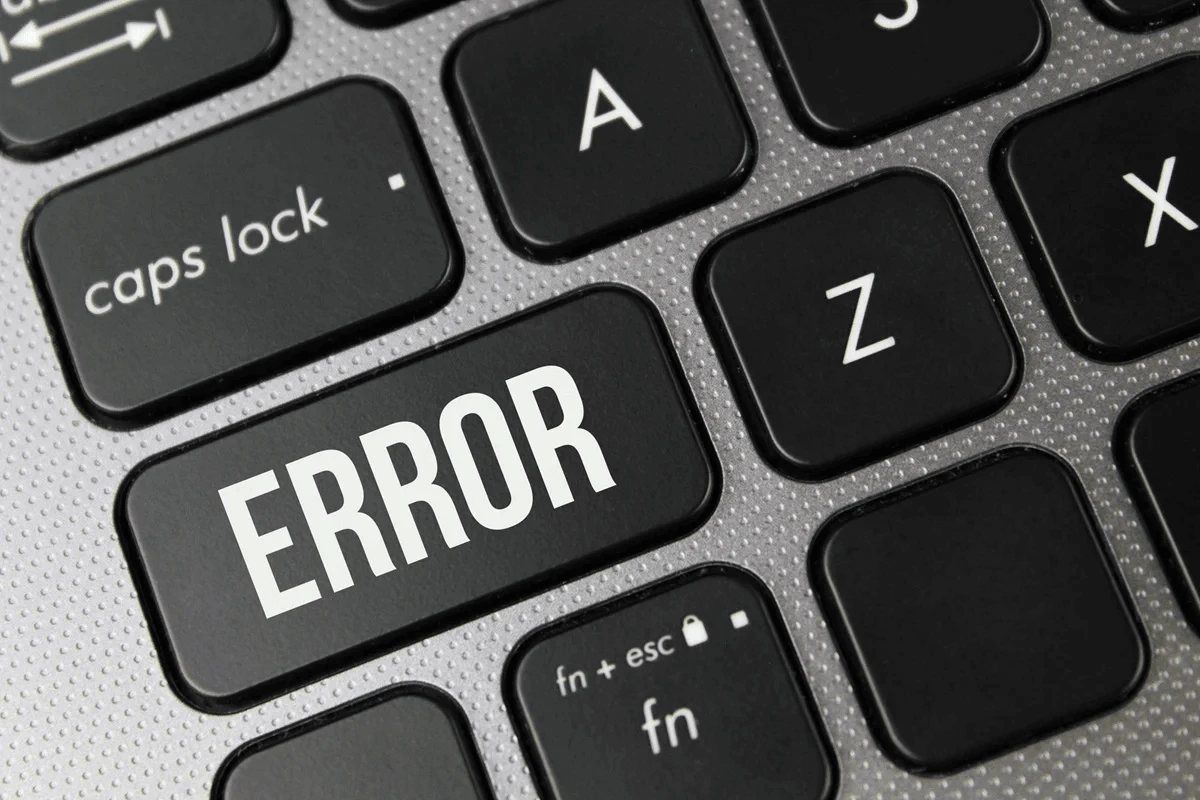Accurate information is the foundation of business success. Data entry errors—mistakes made during the process of inputting data into computer systems—pose a serious threat to this foundation. These errors can cascade into costly mistakes, affecting everything from daily operations to strategic decision-making. Data entry errors can have serious consequences and a significant impact on business operations, financial accuracy, and overall decision-making.
This comprehensive guide dives deep into data entry errors—exploring what they are, why they occur, the impact they have, and how organizations can effectively prevent and manage them. Whether you’re a manager, data specialist, or business owner, understanding data entry errors is crucial for maintaining clean, reliable data.

What Are Data Entry Errors?
Data entry errors are inaccuracies introduced when inputting data into a system. They can occur during manual input, transcription from paper documents, or even automated processes where configurations are incorrect. Unlike system-generated errors caused by software bugs, data entry errors often stem from human mistakes or process inefficiencies. Inaccurate data entry can result from manual errors, such as typing errors, and these data entry mistakes can compromise data quality.
These errors can take many forms—from simple typos to complex misclassifications—arising during entering data or inputting information, where the accuracy of data entered is critical for business operations. Since data fuels reporting, analysis, and business operations, errors at this stage can undermine the entire data lifecycle. Understanding and mitigating these errors ensures that data remains trustworthy and actionable.
Common Types of Data Entry Errors
Common data entry errors come in many forms, and knowing the different types helps in identifying and addressing them effectively. Such mistakes can significantly impact data quality, leading to inaccurate records and operational inefficiencies.
1. Typographical Errors (Typos)
Typographical errors happen when users accidentally hit the wrong keys or misspell words. For example, a customer’s last name “Smith” might be entered as “Smtih,” or a zip code “90210” could be mistyped as “92010.” Such errors, although often small, can cause large issues, especially in customer databases, billing information, or shipping addresses, leading to miscommunications or failed deliveries.
2. Transposition Errors
Transposition errors involve reversing the order of characters or digits, such as typing “56” instead of “65.” These errors are common in numeric fields like phone numbers, account numbers, or financial figures. Transposition errors are particularly problematic because they might look plausible but are incorrect, making them difficult to detect without validation.
3. Omission Errors
Omission errors occur when required data is left out. This might be forgetting to enter a phone number, missing a tax identification number, or leaving out an important part of an address. Identifying and preventing missing information during data entry is crucial to maintain data accuracy and avoid errors that can impact business operations and trust. Omissions reduce data completeness, impairing the usefulness of the dataset and potentially causing errors downstream—like invoices being sent to incomplete addresses or client records lacking critical contact info.
4. Duplication Errors
Duplication errors happen when the same data is entered multiple times, often due to the lack of proper validation controls or communication breakdowns between teams. Duplicate records can occur when there are slight variations in data, such as differences in names or contact details, leading to inconsistencies and inefficiencies in data management. This inflates records, making data analysis unreliable—for example, duplicate customer entries can result in overcounting sales or misreporting customer activity.
5. Formatting Errors
Formatting errors happen when data is entered in inconsistent or incorrect formats. Consider dates: some people might enter “12/07/2024” (MM/DD/YYYY), while others write “07/12/2024” (DD/MM/YYYY). Such inconsistencies can cause confusion in processing systems and lead to incorrect interpretations of dates or numbers. Additionally, formatting errors may result in out of range values, where data falls outside acceptable parameters, further causing confusion or inaccuracies in data processing.
6. Misclassification Errors
Misclassification occurs when data is entered under the wrong category or field. For example, entering a phone number into a fax number field or a personal email address into a work email field. Misclassification corrupts data integrity, resulting in poor segmentation, faulty analytics, and communication breakdowns.
7. Logical Errors
Logical errors occur when the data itself is technically correct but illogical. For example, entering a future date for a birthdate or a negative number for inventory stock. These errors often arise from a lack of validation rules or misunderstanding the context of the data.
8. Auto-correction or Auto-complete Errors
Modern software often tries to “help” by auto-correcting or auto-completing data entries. However, these automated features sometimes change the intended input—like changing a company name to a commonly used word—introducing subtle errors that may be overlooked during review.
Causes of Data Entry Errors
Understanding why data entry errors occur is critical to effectively preventing them. Human errors, manual tasks, and repetitive tasks are leading causes of data entry mistakes. These causes can be divided into human, process, and technology factors. As a result, organizations may face incorrect data, incorrect records, and flawed information, all of which undermine data reliability.
Human Factors
- Fatigue and Distraction: Data entry is often repetitive and requires high concentration. Extended periods of data entry without breaks can lead to fatigue, causing users to become careless or distracted, resulting in errors. Data entry clerks are particularly susceptible to these issues due to the repetitive nature of their work.
- Lack of Training: When personnel lack proper training on data entry systems or the importance of data accuracy, they may not understand how to avoid errors or the consequences of inaccuracies.
- Inattention to Detail: Under pressure to meet deadlines or targets, individuals may rush, sacrificing accuracy for speed, leading to missed or incorrect entries.
- Poor Understanding of Data Importance: If staff do not realize how critical their data entries are, they may not prioritize precision or follow data quality protocols.
Process Flaws
- Complex or Confusing Forms: Overly complicated forms or ambiguous fields increase the likelihood of errors, as users may misinterpret what data is required or where to input it.
- Lack of Standardization: When data entry formats and procedures are inconsistent across departments or teams, it leads to varied data quality and confusion. Establishing clear guidelines for data entry processes is essential to ensure consistency and accuracy.
- No Validation or Review Checks: Without automatic checks or human review, errors go unnoticed and propagate through the system. Unnecessary data entry can also occur due to poor process design, resulting in redundant or duplicate information.
- Manual Data Transfers: Transcribing data from one system to another by hand invites errors, especially when handling large volumes or complex data sets.
Technology Limitations
- Poor User Interface Design: Cluttered or unintuitive interfaces increase cognitive load, causing users to make mistakes.
- System Incompatibilities: When multiple systems don’t communicate well, data must be entered multiple times or reformatted, increasing errors.
- Insufficient Data Validation: Systems lacking robust validation rules fail to catch out-of-range or improperly formatted data at the point of entry.
- Technical Failures: Hardware malfunctions, software bugs, or slow systems can cause incomplete data submissions or data corruption.
Utilizing automation tools, data entry automation, and automated data entry can help overcome these technology limitations by reducing manual input and minimizing errors.
The Impact of Data Entry Errors
The consequences of data entry errors can be extensive and damaging across multiple business areas. Data entry errors can negatively impact the overall quality of data management and data processing, leading to inefficiencies, inaccurate reporting, and poor decision-making.
1. Financial Losses
Inaccurate data can lead to incorrect billing, missed payments, or overpayments. For example, a single misplaced decimal point in an invoice could cause a company to lose thousands of dollars. Additionally, costly audits or regulatory fines may be triggered if errors affect financial reporting.
2. Operational Inefficiencies
Faulty data affects inventory management, scheduling, and supply chain logistics. For instance, inaccurate stock levels can cause stockouts or overstocking, both of which lead to wasted resources and dissatisfied customers.
3. Poor Decision-Making
Executives and analysts rely on clean data to make strategic decisions. Data entry errors distort analytics and reports, resulting in misguided business strategies, missed opportunities, and inefficient resource allocation.
4. Regulatory and Compliance Risks
Industries such as healthcare, finance, and government are heavily regulated. Data errors that violate compliance standards can lead to severe legal penalties, loss of licenses, or reputational damage.
5. Damage to Reputation
Frequent errors in customer-facing data can erode trust. Sending invoices with mistakes, misdelivering orders, or failing to communicate properly all degrade customer satisfaction and brand reputation.
6. Customer Dissatisfaction
Incorrect customer information leads to delayed deliveries, billing issues, or improper communication, frustrating clients and potentially resulting in lost business or negative reviews.
Real-World Examples of Data Entry Errors
Data entry errors can happen in any industry, at any scale, and often when least expected. Incorrect calculations can result from these data entry errors, making it crucial to find errors and catch mistakes early to prevent major problems. While some mistakes may seem small or insignificant at first, their ripple effects can lead to major problems.
These examples serve as cautionary tales and learning opportunities for businesses aiming to safeguard their operations.
Healthcare
Data entry errors in healthcare can have life-threatening consequences. Misentered medication dosages or patient allergies can result in incorrect treatments or adverse reactions. For example, a mistyped blood type could lead to incompatible blood transfusions.
Banking and Finance
Inaccurate data in banking can cause misapplied payments, incorrect account balances, or even fraudulent activity being overlooked. For example, entering “$10,000” instead of “$1,000” could cause serious accounting discrepancies.
Retail
Incorrect product codes or inventory data can cause stock mismatches. A retailer might show an item as in stock when it is not, disappointing customers and causing lost sales.
Government
Errors in census data or tax records can lead to improper resource allocation or incorrect tax bills, impacting public services and citizen trust.
Detecting Data Entry Errors
Detecting errors early helps limit their impact and avoid costly corrections. Validation checks and quality assurance processes play a crucial role in detecting and preventing data entry errors. Data quality assurance measures help correct errors by ensuring that mistakes are promptly corrected, which ultimately serves to enhance accuracy.
1. Automated Validation Rules
Systems can be programmed to check for invalid entries, such as ensuring phone numbers follow a specific format or that numerical values fall within realistic ranges. For example, a date of birth should never be in the future.
2. Cross-Verification
Comparing entered data with original paper documents or third-party databases can identify inconsistencies and confirm accuracy.
3. Duplicate Detection
Advanced software algorithms can scan datasets to flag potential duplicate entries, which can then be reviewed and resolved.
4. Data Audits
Periodic reviews, either manually or via automated scripts, assess data integrity and highlight patterns of errors or recurring issues.
5. User Feedback Loops
Encouraging users or customers to report discrepancies they notice helps catch errors that internal checks miss.
Best Practices for Preventing Data Entry Errors
Reducing errors requires a mix of training, process improvements, and technology. Effective data management and data processing are essential for organizations to maintain accuracy, ensuring that best practices are followed to prevent data entry errors and support reliable decision-making.
1. Invest in Training
Comprehensive training ensures employees understand how to correctly use data entry systems and the critical importance of accuracy.
2. Simplify and Standardize Data Entry Forms
Designing intuitive, user-friendly forms with dropdown menus, auto-fill options, and clearly marked required fields reduces guesswork and errors.
3. Use Data Validation and Error-Checking Tools
Implement real-time validation to catch errors as data is entered, including format checks, range limits, and mandatory fields.
4. Automate Data Entry Where Possible
Technologies like OCR, barcode scanning, or system integrations can eliminate manual data entry, greatly reducing human error by automating repetitive tasks and manual tasks, especially when processing large volumes of electronic data.
5. Introduce Double-Entry Verification
Having two different operators enter the same data independently and comparing results catches discrepancies before data is finalized.
6. Regular Data Quality Audits
Routine audits help identify systemic issues or training gaps, allowing for continuous improvement.
7. Use User-Friendly Interfaces
Clear, responsive system designs reduce cognitive load and streamline the data entry process.
8. Monitor Operator Performance
Tracking error rates and providing constructive feedback encourages accuracy and accountability.
9. Maintain Clear Documentation
Up-to-date manuals and guidelines help standardize procedures and support new staff training.
Related Article:
Finding and Knowing About Data Entry and Services That Your Business Needs
Start concentrating on what matters most: growing your company! Make your business profitable. Read on to know more about data entry outsourcing.
Technologies to Minimize Data Entry Errors
Emerging and established technologies offer powerful solutions. Automation tools, data entry automation, and automated data entry play a significant role in improving accuracy and efficiency by automating repetitive tasks and reducing manual effort. These technologies help minimize errors and streamline workflows in data entry processes.
1. Optical Character Recognition (OCR)
OCR converts scanned paper documents into machine-readable data, eliminating manual transcription errors. For example, digitizing invoices automatically extracts key fields like amounts and dates.
2. Intelligent Character Recognition (ICR)
ICR enhances OCR by recognizing handwritten characters, useful in processing forms, surveys, and applications.
3. Barcode and RFID Scanning
These technologies capture data from physical assets instantly, reducing reliance on manual typing and minimizing errors.
4. Voice Recognition
Allowing operators to enter data by voice can speed up input and reduce errors in hands-busy environments like hospitals.
5. Artificial Intelligence (AI) and Machine Learning (ML)
AI can analyze data patterns to flag anomalies or predict likely errors for human review, improving accuracy and efficiency.
6. Robotic Process Automation (RPA)
RPA bots perform repetitive data entry tasks with consistent accuracy, freeing human workers for more complex roles.
Handling Data Entry Errors When They Occur
Errors are inevitable but manageable if handled properly. It is crucial to identify and correct errors in the data entered to maintain data integrity and ensure reliable business operations. Errors should be promptly corrected to prevent further issues and maintain the accuracy of reporting and decision-making.
1. Establish Clear Error Reporting Channels
Create an open culture where employees feel comfortable reporting errors without fear of punishment, enabling faster corrections.
2. Correct Data Quickly
Implement workflows that prioritize prompt correction once errors are identified, preventing error propagation.
3. Analyze Root Causes
Use error data to investigate systemic issues—whether training gaps, process flaws, or technical problems—and implement corrective measures.
4. Maintain Audit Trails
Documenting changes ensures transparency and accountability, and helps in regulatory compliance.
5. Communicate with Stakeholders
Inform affected parties promptly to maintain trust and manage expectations.
Partner with Experts to Eliminate Data Entry Errors
Understanding the impact of data entry errors is the first step toward preventing them and improving your business operations. But tackling these challenges requires more than just awareness—it demands expertise, reliable processes, and a partner you can trust to handle your data with precision.
That’s where our expert team comes in. We specialize in delivering highly accurate, efficient, and cost-effective data entry outsourcing services tailored specifically to your business needs. Our trained professionals leverage advanced technology and proven quality control methods to ensure your data is entered correctly the first time—every time. By reducing errors, saving you time, and enhancing operational efficiency, we help you maintain the integrity of your data without compromising quality.
Reach out to us today and discover how our expert team can help you maintain clean, error-free data that drives smarter decisions and long-term success.







